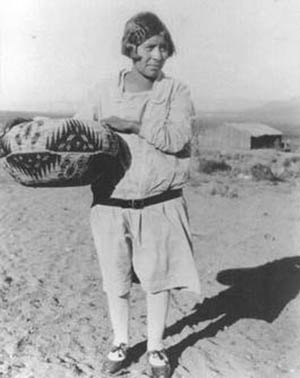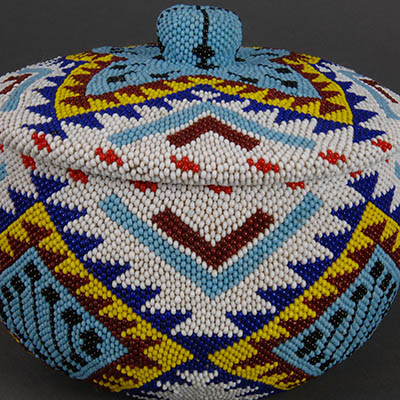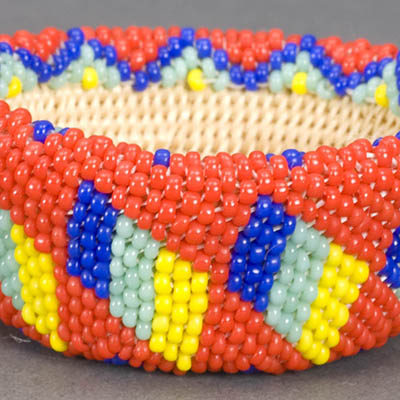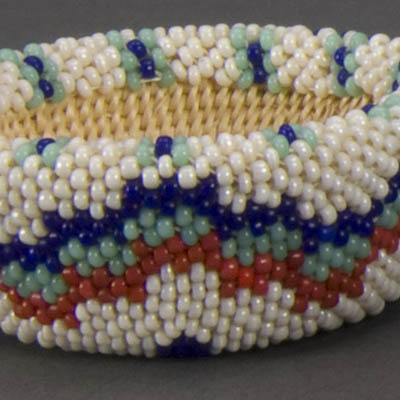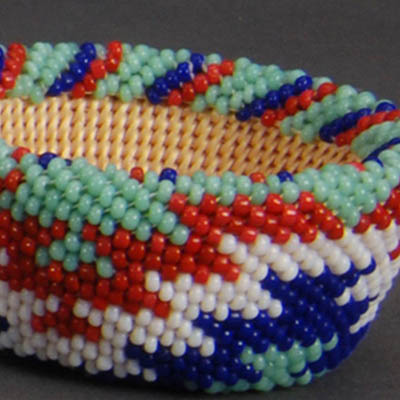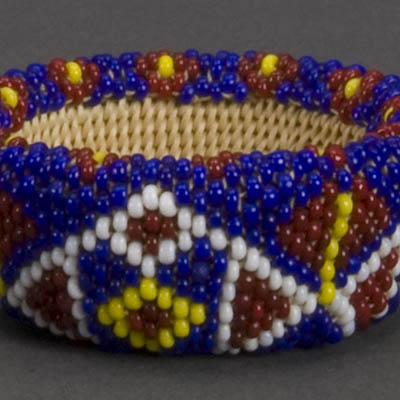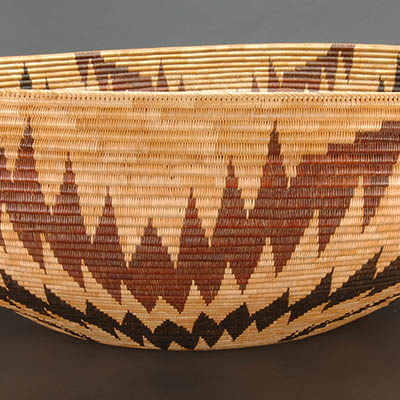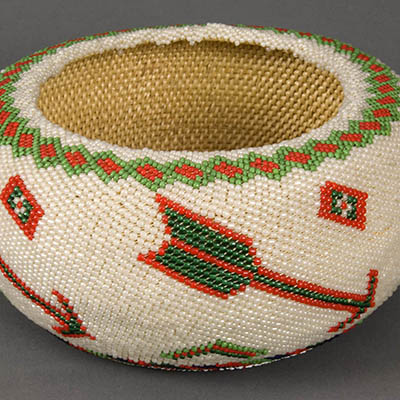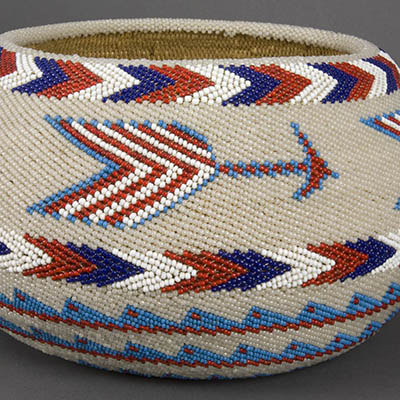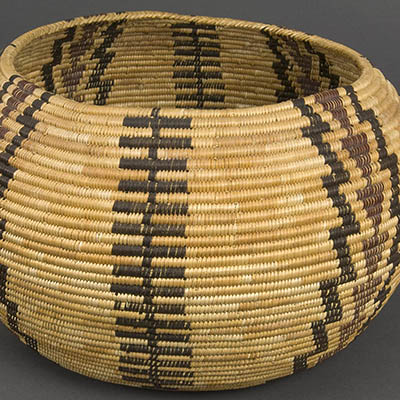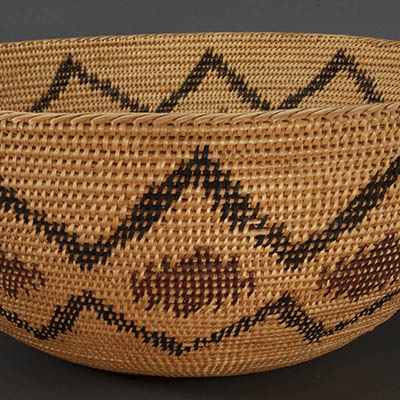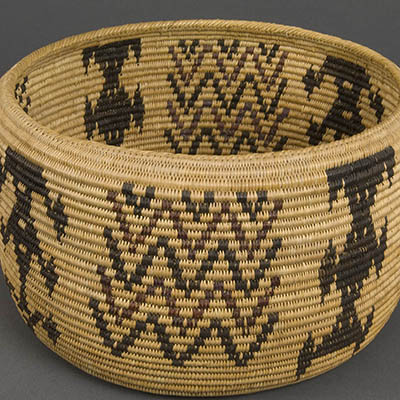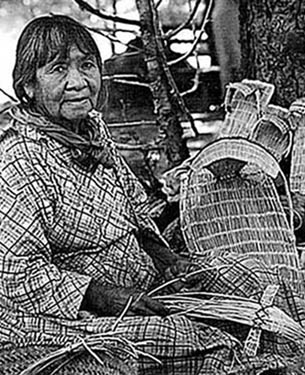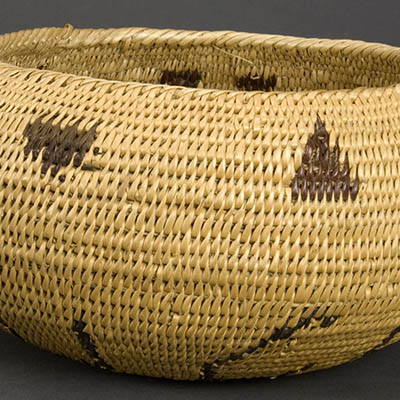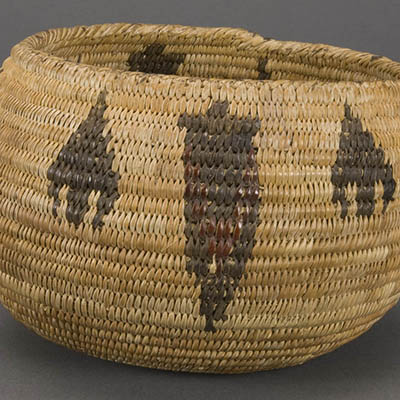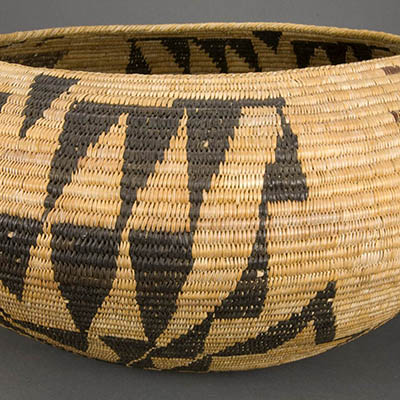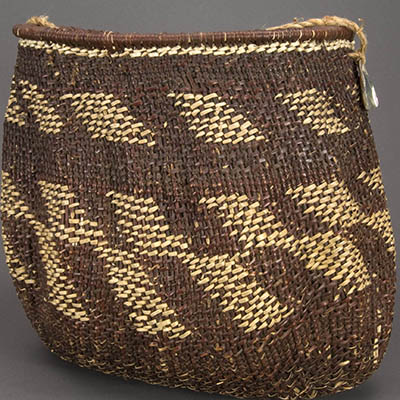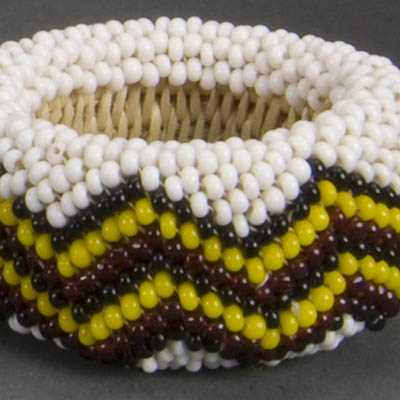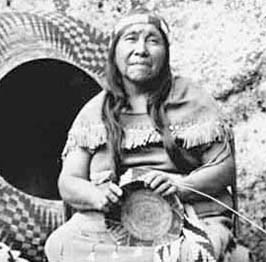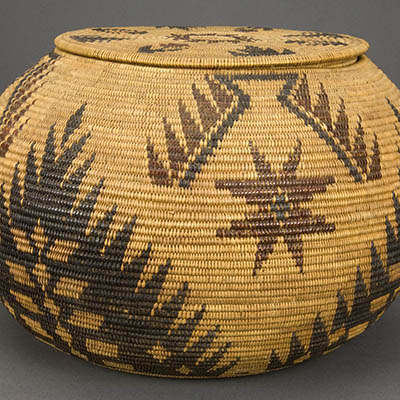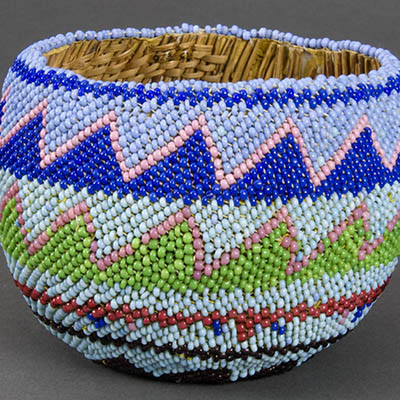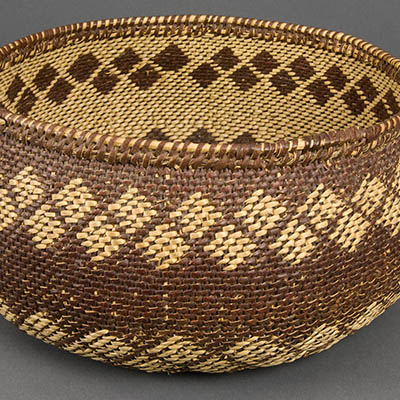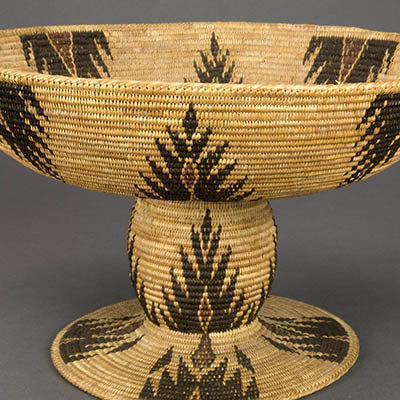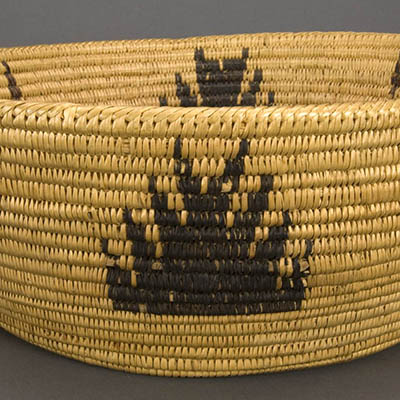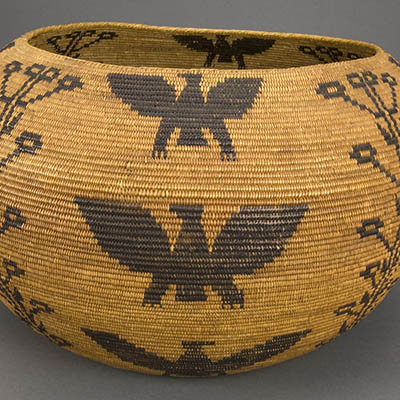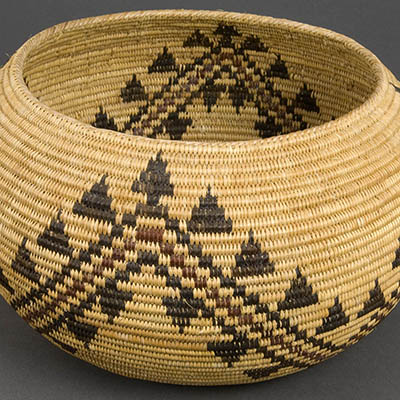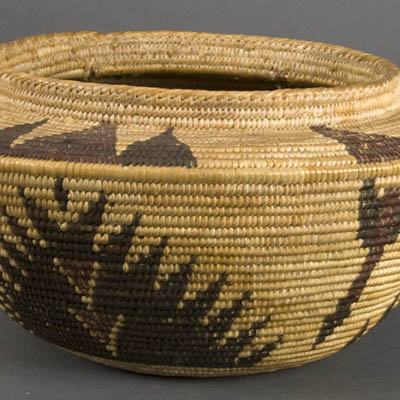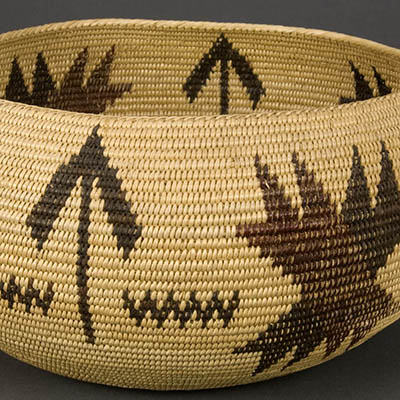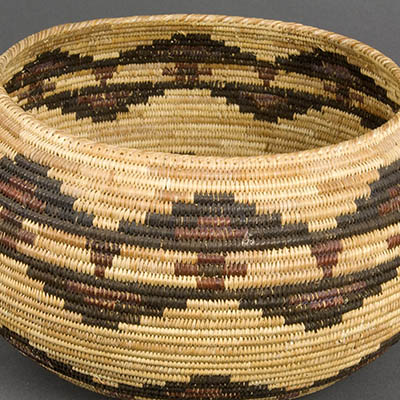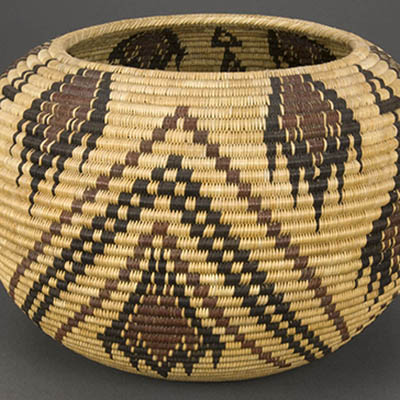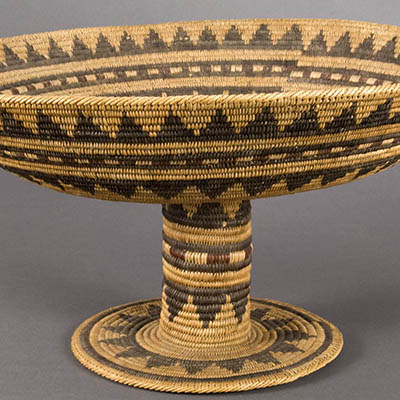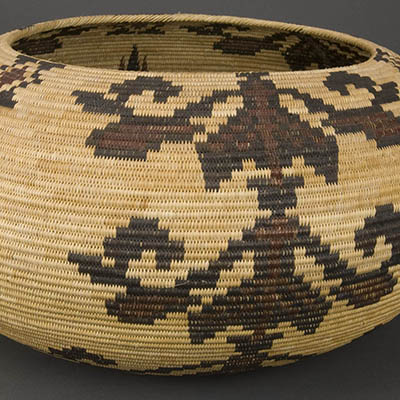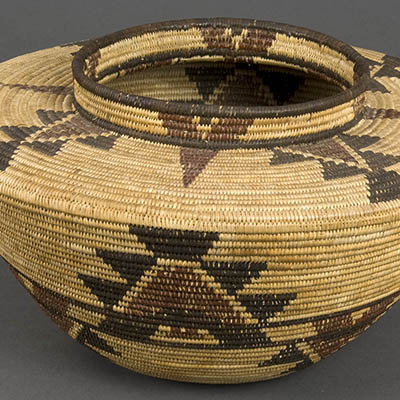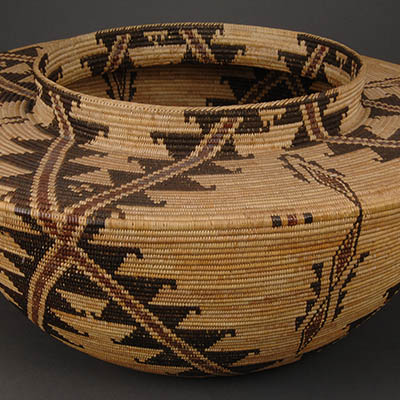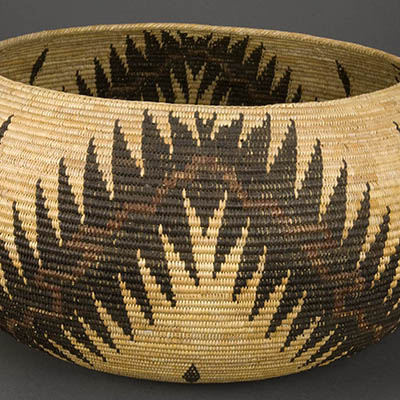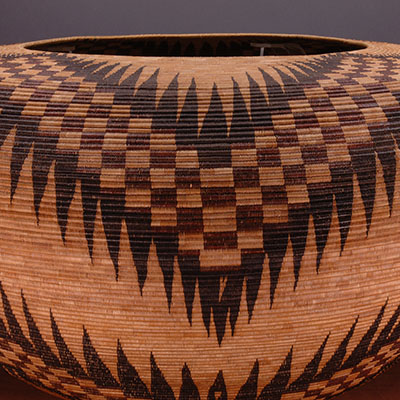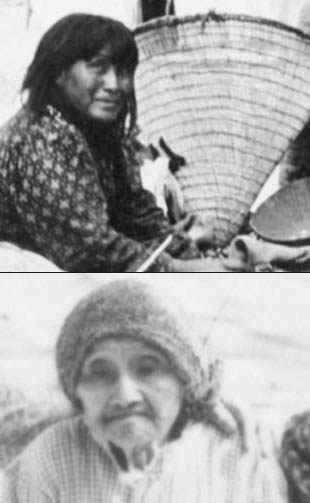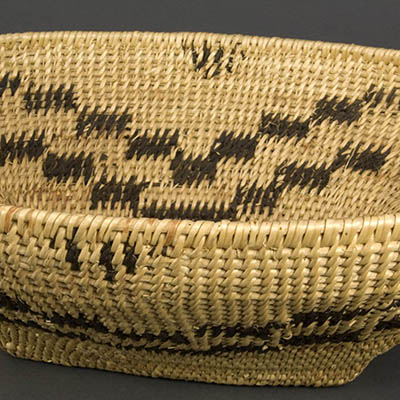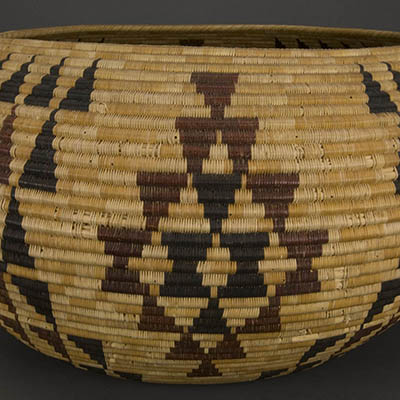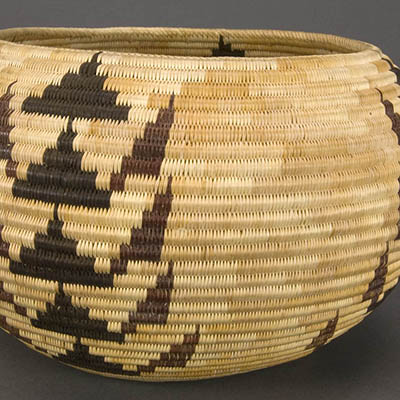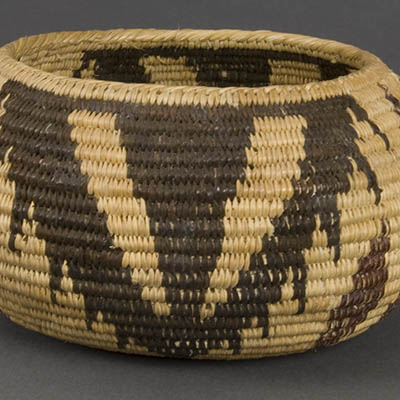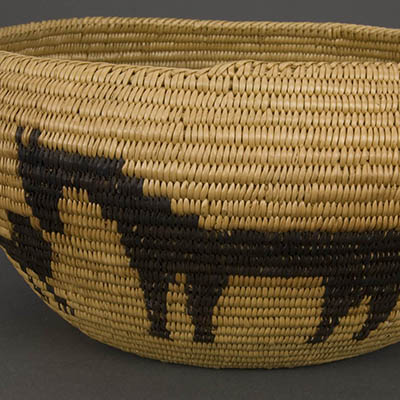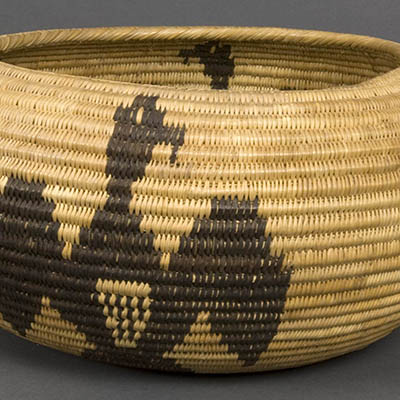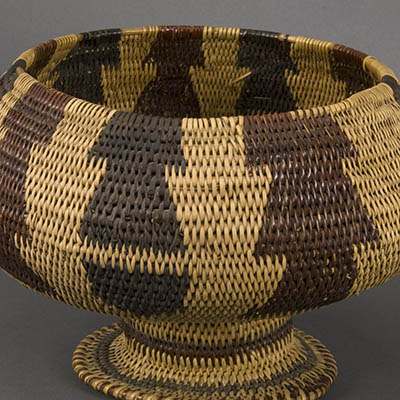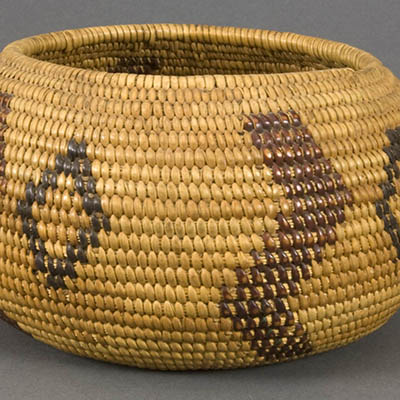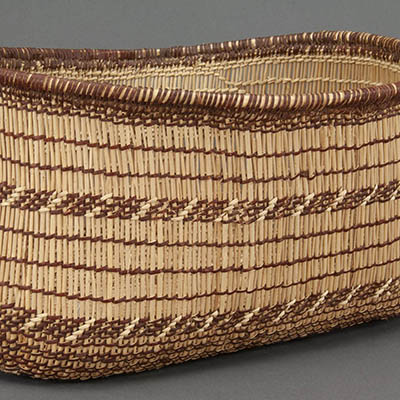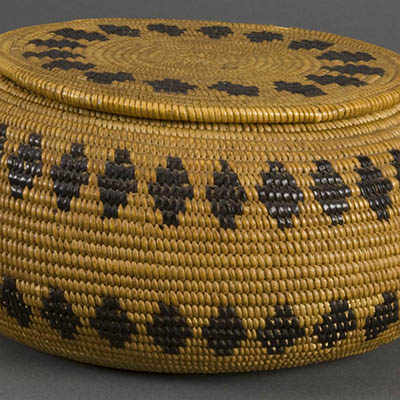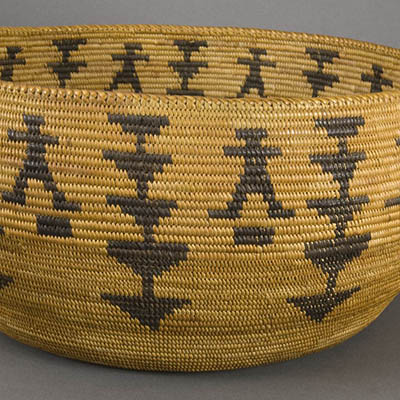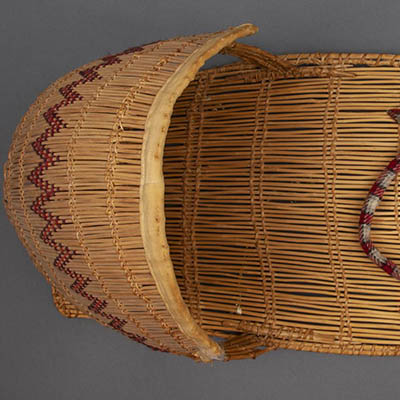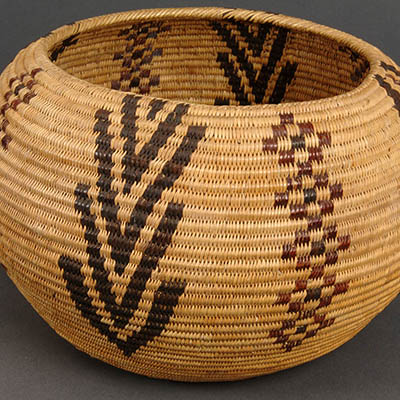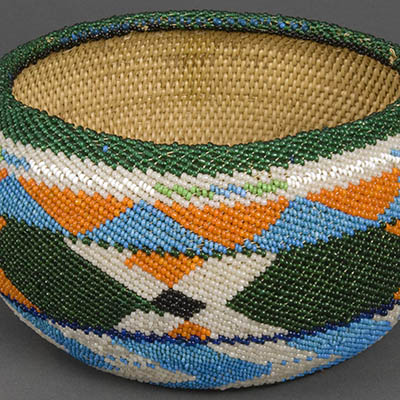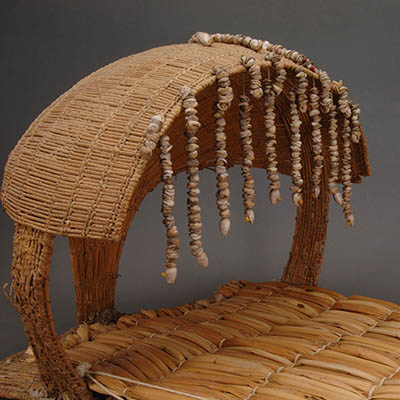Carrie Bethel (1898-1974)
Carrie Bethel was a Mono Lake Paiute woman born in Lee Vining in 1898 and raised in the Mono Basin near Bodie, California. Carrie learned to weave as a child, finishing her first basket at the age of twelve. From there, Carrie became an accomplished weaver. She participated in multiple weaving competitions including the Yosemite and June Lake Indian Field Days and the Golden Gate International Exposition in 1939. Many of her larger baskets were purchased by the collector James Schwabacher. Carrie produced coiled baskets with intricate, two-toned patterns. She was also known for her beaded and miniature baskets.
Nellie Charlie (1867-1965)
Nellie Charlie, a Mono Lake Pauite basketmaker, was born in Lee Vining in 1867, was raised in the Mono Lake area. She married Young Charlie, a Miwok man from Yosemite. They lived at the Young ranch on Rush Creek near Lee Vining.
Nellie and her younger sister, Tina, were excellent weavers and regular competitors in basket competitions including the Yosemite Indian Field Days and Bishop Harvest Days. Nellie’s daughter, Daisy Mallory became a well-known weaver.
Nellie, whose baskets appear in this exhibit, blended the traditional with the new. She produced traditional utilitarian baskets, but also made hot pads, laundry baskets, coasters, and bassinets. Nellie used geometric patterns together with patriotic symbols like the American eagle and the Union Shield.
Maggie Howard (1870 – 1947)
Maggie Howard, a Paiute woman, was born near Bridgeport, California around 1870. She lived there for most of her childhood, but moved to the Mono Lake area with her father after her mother died. Maggie visited Yosemite Valley often during her youth, eventually making it her home. She worked for various Yosemite residents cooking and cleaning, until 1929 when she began giving cultural demonstrations of food preparation, beading, basket weaving, and other skills for visitors to the Yosemite Museum. She sold the baskets and beadwork that she produced, and also regularly entered her basketry and beadwork into Yosemite’s Indian Field Days competitions. In 1942, she left Yosemite Valley and returned to Mono Lake to live closer to one of her sons.
Julia Parker (1929- )
Julia Parker, the daughter of a Pomo woman from Kashaya Rancheria, was born in Graton, California in 1929. She grew up near Carson City, Nevada, but came to live in Yosemite in 1948 when she and Ralph Parker, grandson of Lucy Telles, were married. Julia became a cultural demonstrator at the Yosemite Museum. She learned to weave from multiple master weavers including Tina Charlie, Carrie Bethel, and Minnie Mike. As such, Julia’s pieces often exhibit a combination of Pomo, Miwok, and Paiute styles. By the 1970s, Julia was known throughout California for her exceptional skills, and was traveling to other areas to demonstrate and to teach workshops in making baskets. Julia worked at the Museum for 55 years and retired in 2015.
Lucy Telles (1885-1955)
Lucy Telles, aka Pa-ma-has, was born in 1885 near Mono Lake to Miwok and Paiute parents. Her family had homes in both Yosemite Valley and the Mono Lake area, and Lucy spent much of her childhood and most of her adult life in Yosemite Valley. Lucy learned traditional weaving from her mother, and she quickly became an adept weaver. By the 1920s, Lucy had gained a reputation as a fine weaver known for her intricate and innovative designs. She was a frequent prize-winner of Yosemite Indian Field Days basket competitions, and in 1939, her largest and most recognized basket was exhibited at the Golden Gate International Exposition in San Francisco. Lucy demonstrated basket weaving to park visitors from the 1930s until her death in 1955.
Leanna Tom (ca. 1850-1965) and Louisa Tom (1847-1956)
Leanna Tom was born around 1850 and her older sister, Louisa Tom, was born in 1847, both in Yosemite Valley. Their parents’ ancestry is uncertain, but they spoke both Miwok and Paiute. The two sisters married Mack “Bridgeport” Tom, a Paiute healer, and together spent summers in Yosemite Valley and winters at “Bridgeport” Tom’s ranch near Mono Lake. Both Leanna and Louisa wove Paiute-style baskets. Leanna was known for twined basketry, especially her twined cooking baskets, and for blending traditional and beadwork-inspired patterns. She regularly entered her baskets into competitions including the Bishop Harvest Days festival and the Yosemite Indian Field Days and was a frequent prize-winner. Louisa was known for her twined sifting trays, but it is uncertain whether she participated in any competitions.
Alice Wilson (1899-1959)
The daughter of “Bridgeport” and Louisa Tom and younger sister to Lucy Telles, Alice Wilson was born near Mono Lake in 1899. She lived most of her life in Yosemite Valley and worked as a cultural demonstrator at the Curio Shop of the Ahwahnee Hotel and later at the Yosemite Museum. An adept weaver by the age of 16, Alice wove traditional and new-style baskets using realistic animal motifs, especially butterflies, on many of her baskets. She was also well-known for her beadwork including loom-beaded sashes, beaded lapel pins, and beaded baskets. Like her sister, Alice was a regular participant in the Yosemite Indian Field Days, entering both basketry and beadwork into the competitions.

